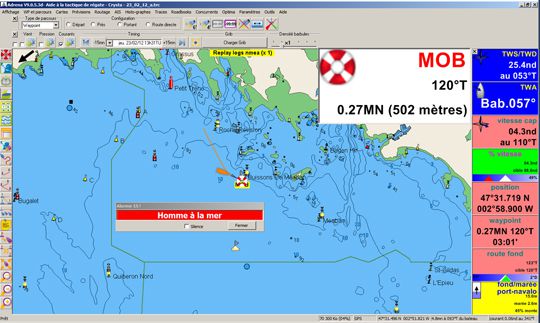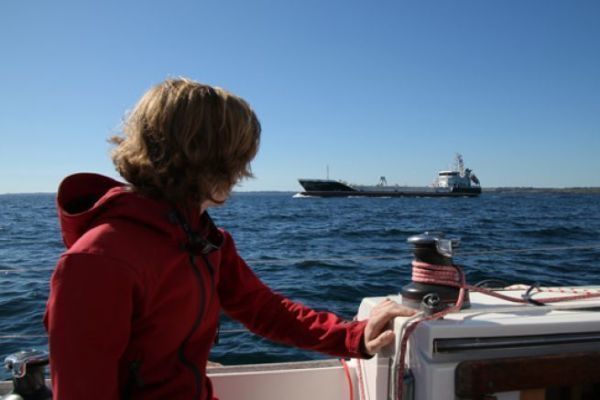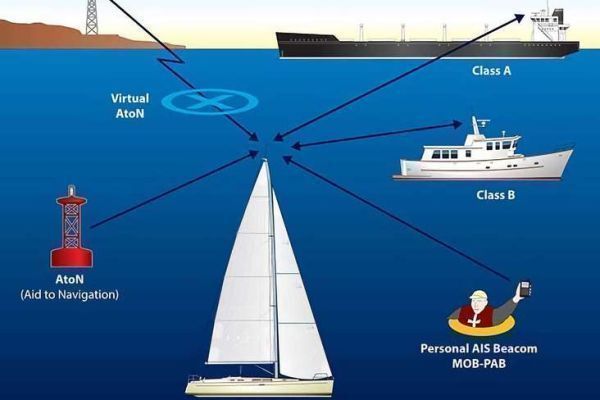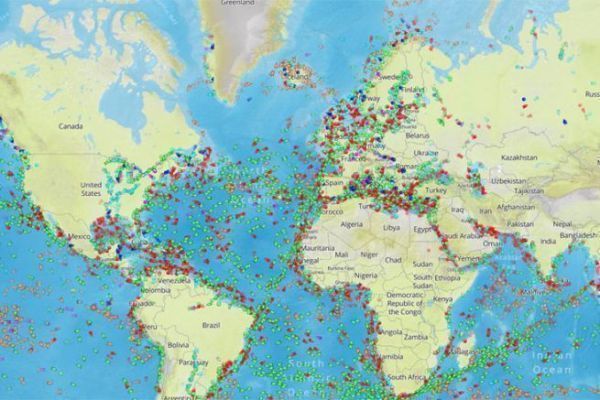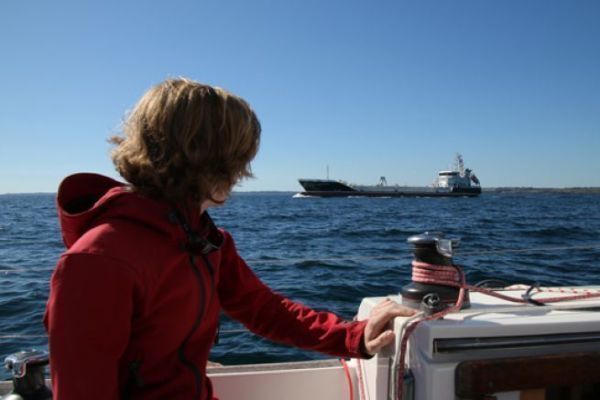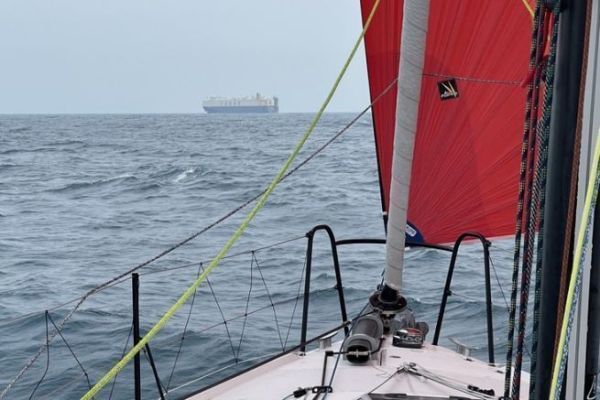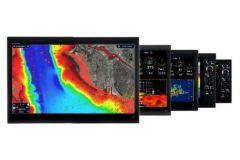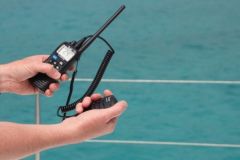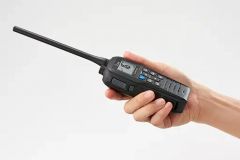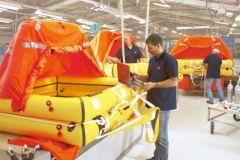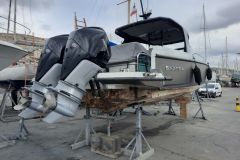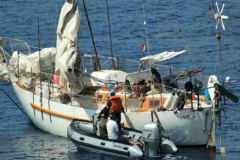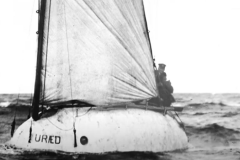The AIS, or Automatic Identification System, was developed for the merchant navy to avoid collisions at sea, and to provide real-time fleet tracking. It was adopted by the International Maritime Organization (IMO) in 2000, and made mandatory for ships of over 300 gross tons, or large vessels, making international voyages from 2004.
AIS is a system for the automated exchange of messages between vessels via VHF, enabling ships and traffic monitoring systems, such as CROSS in France, to know the identity, status, position and course of vessels in the navigation zone. AIS uses two dedicated radio frequencies to transmit and receive coded data according to a standardized protocol.
Who can benefit from AIS?
A priori, all yachtsmen, whether sailing close to the coast or offshore, under sail or motor, can use AIS. But it's true that those who sail in areas with a high concentration of traffic, such as the "rails", will be more affected by this safety device.
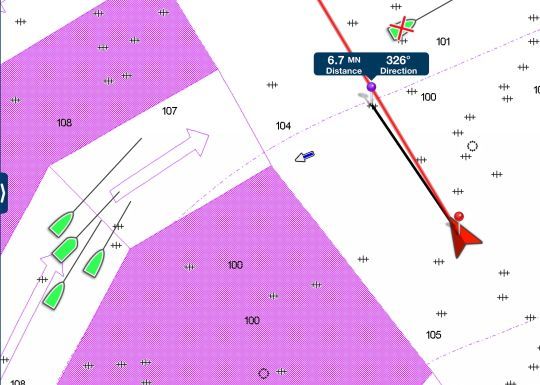
Receiver or transponder?
For pleasure boating, where there is no regulatory obligation to install an AIS, you can either equip yourself with a simple AIS receiver, or opt for a transponder.
The difference between an AIS receiver and an AIS transponder is that the AIS receiver only receives data from vessels fitted with an AIS transponder, whereas the AIS transponder can both transmit and receive data. In practical terms, this means that the AIS receiver enables you to see the traffic around you, but not to transmit your own identity, position, speed and course to other vessels. The AIS transponder, on the other hand, allows you to be identified by other vessels and shore stations, thus increasing safety and collision avoidance.
There are several types of AIS, distinguished by the power of the transmitters and the frequency of the messages transmitted by the boats.
- Class A is more powerful and more expensive, with a power of 12.5 W and a frequency of 2 seconds. It is reserved for professionals.
- Class B, suitable for pleasure boats, with a power of 2 W and a frequency of 30 seconds. Some devices are rated B+, with a power of 5 W and a frequency of 5 seconds.
AIS installation requires a dedicated VHF antenna, or an antenna splitter to share the VHF antenna. The AIS receiver or transponder can be fitted with a dedicated display, or connected to a plotter, radar, computer or tablet via various communication protocols (NMEA0183, NMEA2000, Wi-Fi).
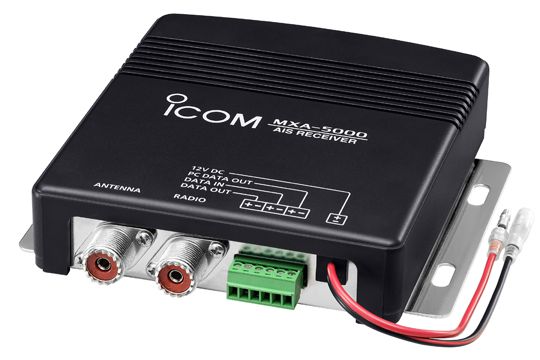
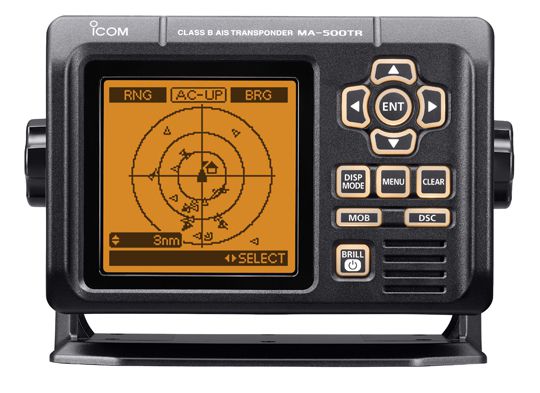
Setting up an AIS
To set up an AIS, you must first obtain an MMSI (Maritime Mobile Service Identity) number from the relevant authority. In France, the Agence Nationale des Fréquences (ANFR) distributes MMSI numbers to vessels equipped with AIS or VHF radio. The MMSI is a 9-digit numerical code that identifies the vessel and its owner.
Finally, you need to configure the transponder on first start-up, by entering the MMSI number, vessel name, vessel type and size. Please note that these settings are definitive, and it will be impossible to modify the recorded data at a later date without the manufacturer's intervention. The final step is to check that the AIS is receiving the GPS signal, and that it is correctly transmitting and receiving data from other vessels and stations.
Advantages and disadvantages of AIS
All boats transmitting AIS information are visible to all AIS receivers. This makes it possible to determine their course and avoid collision routes.
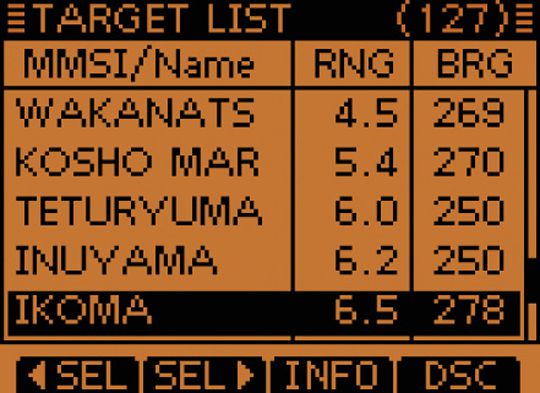
But not all boats transmit an AIS signal. Pleasure craft are under no such obligation. Only commercial vessels over 300 tons are sure to transmit: cargo ships and other commercial vessels. Fishermen tend to turn it off to avoid being followed on fishing grounds.
Sailing with an AIS on board brings great safety. But be sure to keep a visual watch. Indeed, we often tend to look at the electronic chart with moving targets, forgetting that some boats don't have AIS transmitters.
